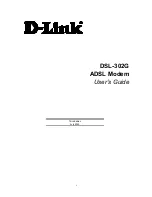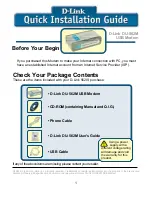
Elpro Technologies 450U-E Wireless Ethernet Modem & Device Server User Manual
Rev Version 1.0.12-Beta7
www.cooperbussmann.com/wirelessresources
17
CHAPTER 3 - OPERATION
Start-up
3.0
-up
Normal module startup time is approximately 1 minute and 20 Seconds from when first powered on to where you can
connect to the IP address. When the Access Point (AP) has completed its startup process it will immediately begin
broadcasting periodic messages, called beacons on the configured channel using the default beacon interval time of 15
seconds.
Beacons include information that a Client may examine in order to identify if the Access Point is suitable for link
establishment. Clients will only attempt to establish a link with an Access Point whose beacon indicates a matching SSID.
Access Points do not initiate link establishment.
-up
Normal module startup time is approximately 1 minute and 20 Seconds from when first powered on to where you can
connect to the IP address. When a Client completes its startup process it will begin scanning its configured frequency for
a suitable Access Point. The Client will attempt to establish a link with an Access Point only if it has matching SSID,
Encryption method and the correct password. If more than one suitable Access Point is discovered, the client will attempt
to establish a link with the Access Point that has the strongest radio signal.
Link Establishment
Once a Client identifies a suitable Access Point for link establishment it attempts to link using a two-step process
them to establish a link. Once the Client has been authenticated, it will then request an Association to establish a link.
Status of the wireless link is indicated via the TX/LINK LED. For an Access Point, the TX/LINK LED will be OFF while no
links have been established. Once one or more links have been established, the TX/LINK LED is on GREEN. For a Client,
of the web interface.
After the link is established, data may be transferred in both directions. The Access Point will act as a master-unit and will
control the flow of data to the Clients linked to it. Clients can only transmit data to the AP to which they are connected.
When a Client transfers data to another Client, it first transmits the data to the AP, which then forwards the data to the
destined Client.
.
If the encryption keys are incorrect between units in the same system, or a d issimilar encryption
scheme is configured, the LINK led will light, however data cannot be passed over the wireless
network.
A maximum of 127 Clients may be linked to an Access Point.
How a Link connection is lost
A Client monitors beacon messages from an Access Point to determine whether the link is still present. If the Client can
no longer hear the Access Point beacons it will wait 7 beacon times (7 x 15 seconds) and then send a link check
message and if it still does not receive an acknowledgment it will drop the link and clear its connectivity list. If an Access
Point is connected to a single Client and the Client fails or is turned off, the Access Point will wait 5 minutes before
dropping the link and clearing the connectivity list.
Roaming Clients
Clients can roam within a system however there are some limitations due to the link timeouts. If when connected to an
Access Point the link fails because of a hardware problem or the signal level falls below the minimum threshold (-99dB,
25KHz channel @19200 baud or -100dBm @ 9600 baud) the Client will scan for beacon signals and connect to the
Access Point with the strongest RSSI level (If more than one Access Points can be heard and provided the SSID and any
Encryption methods/keys are the same). This functionality allows clients to roam to a stronger Access Point when the
signal level gets too low or the link completely fails, etc. The timeframe for the changeover will be approximately 105
seconds due to the link retires and timeouts.
















































